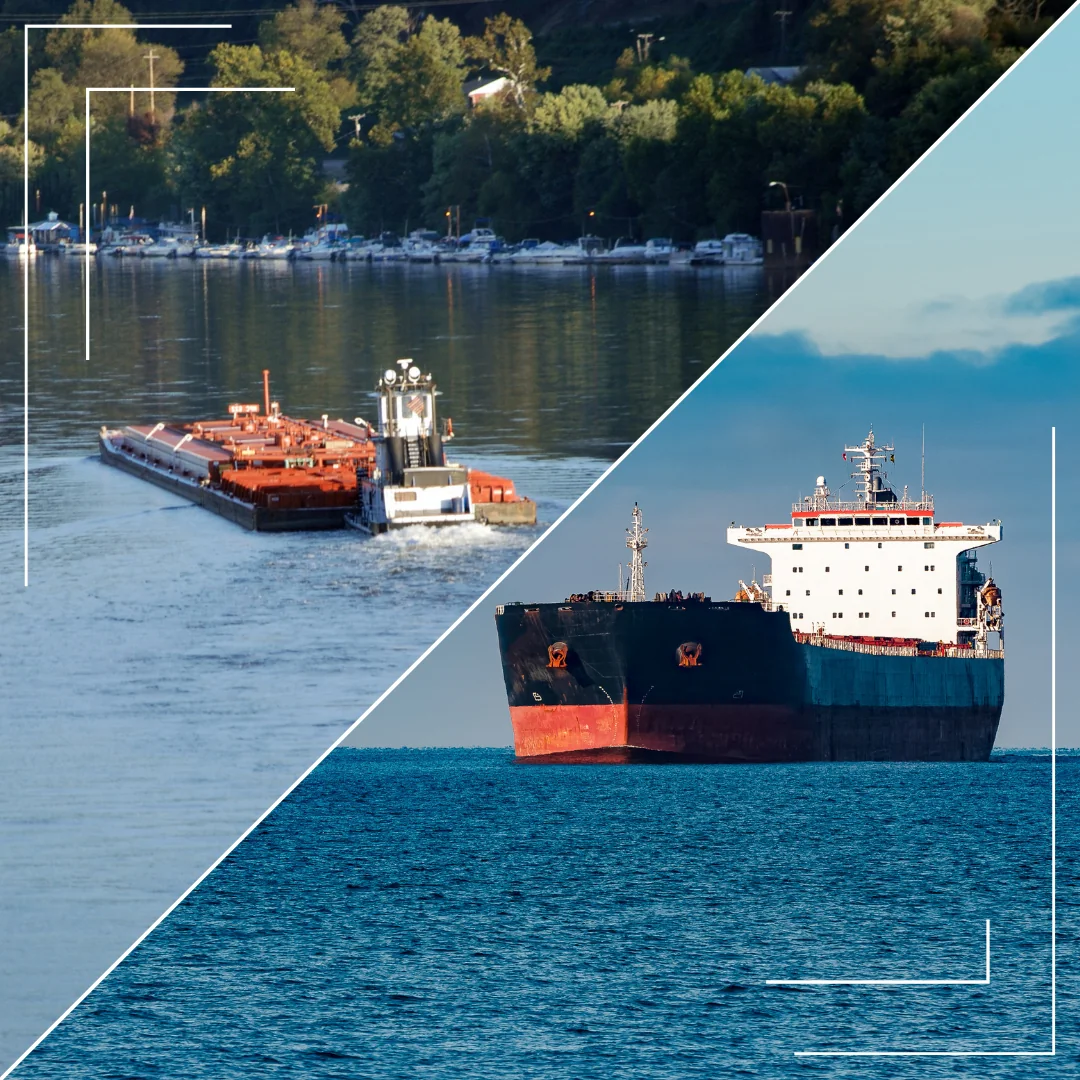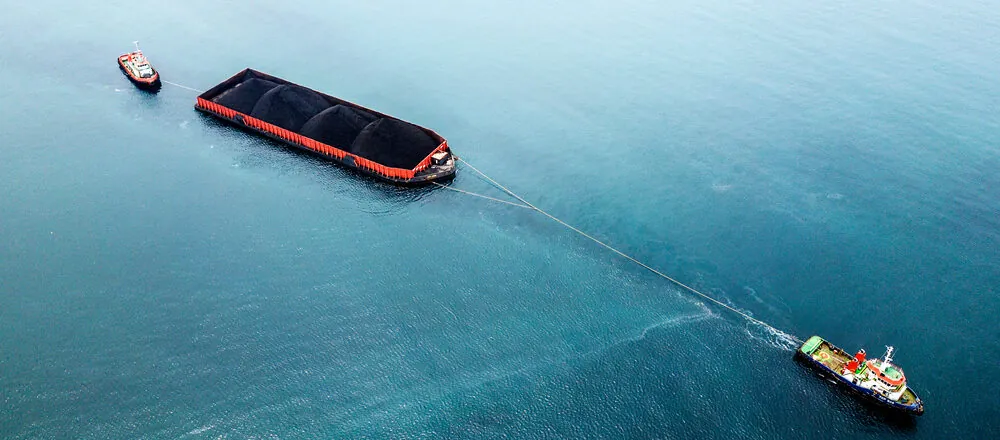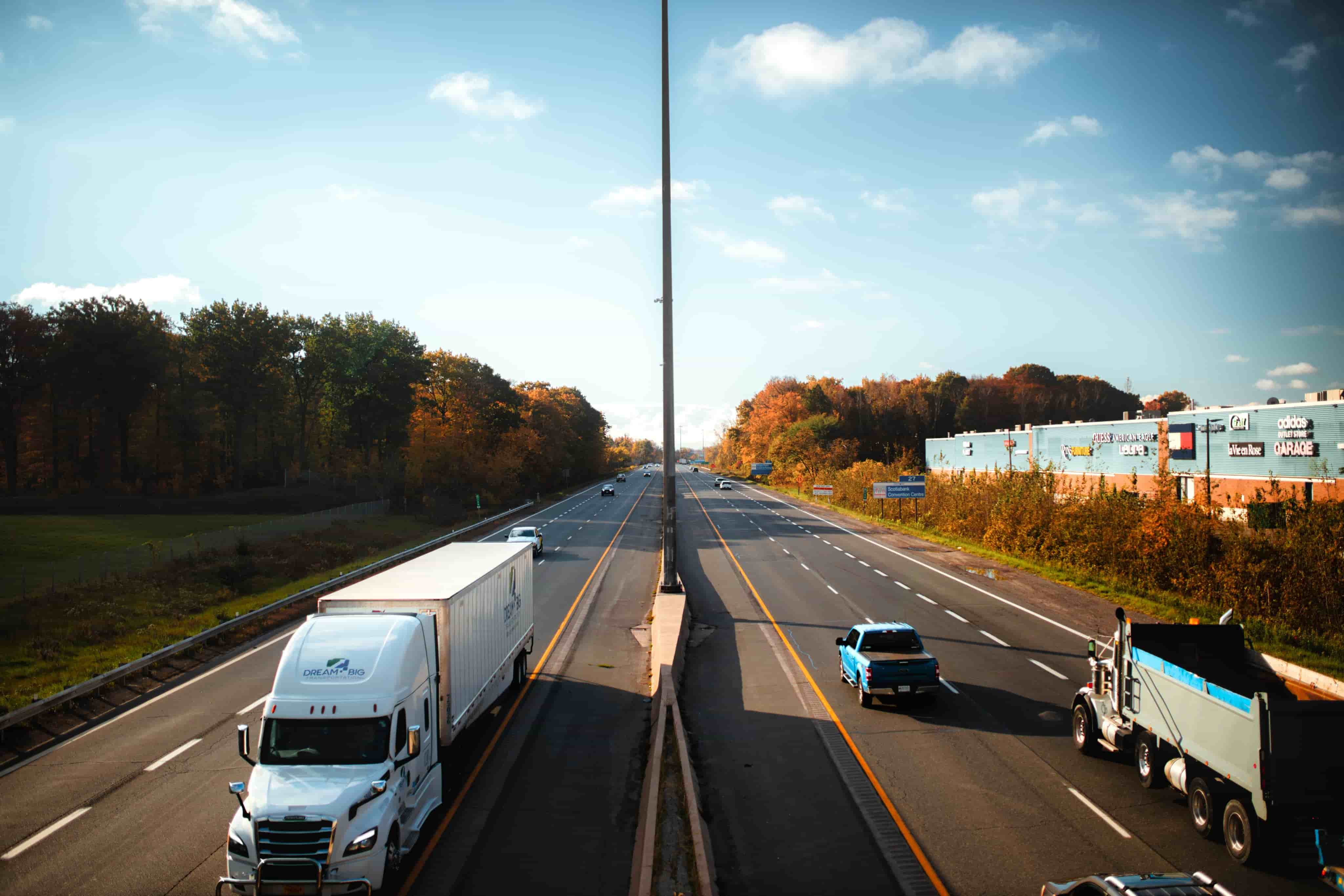
Barge Shipping
Barge Shipping involves the movement of goods and commodities using specialized flat-bottomed vessels, which are well-suited for shallow waters and offer a sustainable alternative to other modes of transport.
What is Barging Transportation?
A barge is a specialized type of watercraft that plays a vital role in various maritime industries and transportation systems, particularly in the field of logistics. These vessels are typically designed to be non-self-propelled, meaning they rely on external sources of power to move, such as tugboats or push boats. Barges come in various sizes and configurations. In addition to their versatility in cargo transportation, barges contribute to reduced environmental impact compared to other transportation methods, as they have a lower carbon footprint and are more fuel-efficient.
Barging has a rich history dating back centuries, and its practicality and adaptability have ensured the continued relevance in modern times, especially in the freight transportation industry, where barge shipping plays a crucial role in the efficient and cost-effective movement of goods. Additionally, barges offer an environmentally friendly and fuel-efficient alternative to traditional overland transportation methods, contributing to reduced congestion and lower carbon emissions. This makes them a sustainable choice for businesses looking to minimize their ecological footprint and highlights their significance in the freight transportation industry, facilitating the seamless movement of raw materials and finished products between manufacturing centers, distribution hubs, and international trade routes.
Thousands of businesses trust FreightCenter to move their freight faster, smarter, and cheaper! From unbeatable rates to top-notch service, our customers are raving about their shipping success.
See why they keep coming back!
Award-Winning Service, Trusted by Shippers Everywhere!
- 2021, 2017 & 2016 Food Logistics’ Top Green Providers
- 2021 & 2018 Supply & Demand Chain Executives’ Pros to Know: Matthew Brosious
- 2020 & 2019 Top Food Logistics’ 3PL & Cold Storage Provider Award
- 2020 & 2019 Business Observer’s Top 500 Companies on the Gulf Coast
- 2020 & 2017 SmartWay® Transport Partner
- 2020 & 2017 Food Logistics’ Champions: Rock Stars of the Supply Chain
- 2020 Best of Palm Harbor Awards for Local Businesses
- 2017 Green Supply Chain Award from Supply & Demand Chain Executive
- 2017 Tampa Bay Business Journal Heroes at Work
- 2016, 2015, & 2012 Food Logistics Top 100 Software and Technology Providers
- 2013 Tampa Bay Business 100 by Tampa Bay Business Journal
- 2013 Top 100 Great Supply Chain Partners by SupplyChainBrain
- 2012 TIA Samaritan Award Honorable Mention
- 2012, 2011 & 2010 TBBJ Fast 50 Recipient
- 2013, 2011, & 2010 Diversity Business Top Businesses

Barges vs. Cargo Ships
The transportation industry relies on a variety of vessels to move goods efficiently and economically. Within this sector, barges and cargo ships stand out as distinct maritime vessels, each with its own set of characteristics and applications.
- Size & Capacity: Cargo ships are significantly larger and have much greater cargo capacity compared to barges.
- Propulsion: Cargo ships are self-propelled, while barges rely on external sources of power, such as tugboats, for movement.
- Design: Cargo ships have a deep draft design suitable for ocean travel, whereas barges have a flat bottom, making them ideal for shallow waterways.
- Versatility: Cargo ships are versatile and can transport various types of cargo, while barges are typically specialized for specific purposes.
- Navigation: Cargo ships are designed for global trade and can cross oceans, while barges are primarily used for inland or regional transportation.
Barge Structure
Barges have been a critical component of the maritime industry for centuries, serving various purposes from transporting goods along inland waterways to supporting offshore construction projects. These flat-bottomed vessels offer unique advantages, making them indispensable in modern transportation and commerce. In this article, we will explore the structure and key characteristics of these vessels, shedding light on their importance in today’s global trade and logistics.
Barges are designed with a distinct structure optimized for specific functions, and they come in various sizes and configurations. The essential structural components include:
- Hull: The hull of a barge is typically rectangular or box-shaped. This flat-bottomed design allows for stability and makes it well-suited for navigating shallow waters, such as rivers, canals, and coastal regions. The flat hull evenly distributes the weight of the cargo, ensuring balance and buoyancy.
- Materials: Barges are constructed from robust materials like steel, aluminum, or other durable options. These materials are chosen to withstand the rigors of constant exposure to water and heavy cargo loads, ensuring the longevity of the vessel’s structure.
- Bulkheads: Vertical walls or partitions within the barge’s interior are used to segregate cargo, create compartments, and enhance stability. They also provide structural reinforcement to support the weight of the cargo.
- Deck and Superstructure: Some barges are equipped with a deck and superstructure. The deck provides a platform for cargo storage and can be flat or slightly raised, depending on the type of cargo. The superstructure may include cabins for crew members, control rooms, or even amenities for extended voyages.
Characteristics of Barges
Characteristics of these vessels make them unique and valuable in various maritime applications. They are primarily non-self-propelled, relying on external sources of power for movement, such as tugboats or push boats. This characteristic allows them to transport cargo efficiently without the need for onboard engines.
Their cargo capacity is noteworthy, capable of accommodating a wide range of goods, from bulk materials like coal, grain, and minerals to heavy equipment, construction materials, and even liquid cargo in tank barges. The cargo capacity varies depending on the vessel’s size and design, making them adaptable for diverse transportation needs.
One of the defining features of these vessels is their shallow draft, which refers to the depth of water required for safe navigation. Their flat-bottomed design allows them to navigate in shallow waters like rivers, canals, and coastal regions, where vessels with deeper drafts cannot operate effectively.
Versatility is another key characteristic of these vessels. They find application in a myriad of roles, from transporting bulk cargo efficiently to serving as floating platforms for events such as parades, festivals, or concerts. Additionally, they play a vital role in supporting offshore construction projects by providing a stable base for heavy machinery and equipment, demonstrating their adaptability to a range of tasks.
The reduced environmental impact of these vessels is a significant advantage. They are often considered more environmentally friendly than other transportation methods due to their lower carbon footprint and fuel efficiency. Transporting goods by water consumes less fuel compared to road or rail transportation, making these vessels an eco-friendly choice. This characteristic aligns with the growing global emphasis on sustainability and reducing ecological impact in logistics and shipping.
Barges play an essential role in the transportation industry, offering unique structural features and characteristics that make them ideal for a variety of tasks. Their non-self-propelled design, shallow draft, and versatility make them indispensable for inland waterway transport, offshore support, and even event hosting. As sustainability becomes an increasing concern, the reduced environmental impact of these vessels highlights their importance in modern logistics and shipping. Understanding the structure and characteristics of these vessels is crucial for appreciating their vital role in today’s global trade and commerce.

Common Barging Cargo
Barges are incredibly versatile vessels designed to transport a wide range of goods and materials efficiently, both along inland waterways and coastal regions. The diverse nature of barge transportation allows for the movement of numerous types of cargo, making them a vital component of the global logistics and shipping industry.
Bulk Cargo: One of the primary categories of cargo transported on barges is bulk cargo. This includes commodities like coal, grains, ores, and minerals. The spacious design of the vessels, along with their high cargo capacity, makes them ideal for moving these heavy, loose materials efficiently. They are often used to transport bulk cargo from mines, agricultural regions, and industrial sites to distribution centers and ports.
Liquid Cargo: Barges are also employed for transporting liquid cargo, such as petroleum products, chemicals, and liquid gases. Tank barges are specifically designed to carry these types of cargo in specialized tanks. Their relatively shallow draft and stability make them suitable for navigating rivers, canals, and nearshore routes, making them valuable for the energy and chemical industries.
Construction Materials: Barges serve as essential carriers of construction materials, including sand, gravel, cement, and steel. They are particularly advantageous for delivering these heavy materials to construction sites located along waterways, offering a cost-effective and efficient means of transportation. The vessels provide a stable platform for handling and transporting large quantities of construction materials.
Heavy Equipment and Machinery: Barges are often used to transport heavy equipment and machinery required for various industrial applications. They are especially valuable in supporting offshore construction projects by serving as a stable and versatile platform for cranes, drilling rigs, and other heavy equipment. Barges can carry large and cumbersome machinery, making them a vital asset in the construction and offshore industries.
Containers: While not as common as container ships, some barges are equipped with container handling systems, allowing for the transportation of standard containers. This makes them a practical option for intermodal transportation, facilitating the seamless transfer of goods between land and water transportation modes.
Agricultural Products: Barges play a crucial role in the transportation of agricultural products. They are used to carry crops such as soybeans, wheat, and corn from rural areas to processing facilities, distribution centers, or export ports. Barge transportation is particularly cost-effective for moving large quantities of agricultural products, helping to keep food supply chains efficient and accessible.
Waste and Recycling: Barges are employed in the transportation of waste and recyclables, especially in densely populated urban areas situated along waterways. They facilitate the efficient movement of waste materials to landfills, recycling centers, or waste-to-energy facilities. This helps alleviate some of the challenges associated with urban waste management.
Oversized and Project Cargo: Barges can accommodate oversized and project cargo that may be challenging to transport by other means. This includes items such as industrial equipment, prefabricated structures, and even entire modules for large-scale construction projects. Barge transportation is a valuable solution for moving these extraordinary loads efficiently.
General Cargo: Beyond specialized cargo types, barges are also used for the transportation of general cargo, which can encompass a wide variety of goods, including manufactured products, consumer goods, and machinery. Barges provide a cost-effective and eco-friendly option for companies looking to move general cargo in an efficient and sustainable manner.
In summary, the versatility of barges makes them a preferred choice for the transportation of various types of cargo, including bulk materials, liquid cargo, construction materials, heavy equipment, containers, agricultural products, waste, project cargo, and general cargo. Their adaptability, cost-effectiveness, and reduced environmental impact continue to position them as a critical component of global logistics and shipping operations.
Barge shipping is an essential mode of transportation in various industries. Here are four examples of primary industries that heavily rely on barge shipping:
The agricultural industry frequently uses barge shipping to transport bulk commodities such as grains, soybeans, corn, and fertilizers. The vessels are especially valuable in moving crops from rural areas to processing facilities, export ports, and distribution centers. They offer a cost-effective and efficient means of moving large quantities of agricultural products.
The energy sector, particularly the oil and gas industry, utilizes barges to transport liquid cargo, including petroleum products, chemicals, and liquid gases. Tank barges are designed to carry these types of cargo in specialized tanks. This is integral to the distribution of energy resources from refineries to various destinations, reducing the strain on other transportation methods.
The construction and Infrastructure industry uses barges to transport construction materials such as sand, gravel, cement, steel, and heavy equipment. The vessels offer a practical and cost-effective solution for delivering heavy and oversized construction materials to construction sites, particularly those situated along waterways. They also serve as stable platforms for offshore construction projects.
Urban areas situated along waterways often rely on barge shipping for waste management and recycling. The vessels transport waste materials from densely populated areas to landfills, recycling centers, or waste-to-energy facilities. This helps alleviate some of the logistical challenges associated with urban waste management and contributes to sustainable waste disposal practices.


FreightCenter Shipping
- Expertise in Freight Shipping Services: FreightCenter boasts extensive experience and proficiency in handling various freight shipments. They understand the unique requirements and challenges of shipping diverse cargo, ensuring proper packaging, handling, and transportation.
- Wide Range of Transportation Options: FreightCenter offers a diverse array of transportation options tailored to your specific freight shipping needs. Whether you require trucking, rail, sea, or air freight, they can provide flexible solutions that accommodate the size, volume, and urgency of your cargo shipments.
- Compliance with Safety and Regulatory Standards: FreightCenter excels in navigating transportation regulations and adhering to safety standards. They ensure that your cargo shipments comply with relevant regulations, including proper labeling, documentation, and adherence to any specific requirements.
- Insurance Coverage: Recognizing the value of your freight shipments, FreightCenter offers comprehensive insurance options to provide protection and peace of mind. Their insurance coverage helps mitigate risks associated with loss, damage, or unforeseen circumstances during transit.
- Real-time Tracking and Communication: FreightCenter employs advanced tracking technologies that grant real-time visibility into the status of your freight shipments. This enables you to easily monitor the progress of your cargo and receive proactive updates regarding potential delays or issues. Their effective communication channels ensure open lines of communication for swift problem-solving.
Barge Shipping with FreightCenter
Freight barging stands as an indispensable and versatile pillar of the transportation industry. Barges play a pivotal role in supporting global trade and economic growth by efficiently moving goods across various waterways. Their unique attributes, including non-self-propelled design, shallow draft, and sustainability, make them a key component of modern logistics. As the world continues to seek sustainable and efficient transportation solutions, the freight barging industry is poised for growth and potential advancements. Its adaptability and commitment to reducing environmental impact ensure its enduring significance in the ever-evolving landscape of global trade and commerce.
Frequently Asked Questions
Q. What is a barge?
A. A barge is a specialized type of watercraft, often with a flat-bottomed design, that is typically non-self-propelled, meaning it relies on external sources of power for movement, such as tugboats or push boats.
Q. What is a barge used for?
A. Barges serve a wide range of purposes, including transporting various types of cargo like bulk materials (coal, grains, minerals), heavy equipment, construction materials, liquid cargo (in tank barges), and even supporting offshore construction projects. They are also used as floating platforms for events and performances.
Q. What is the purpose of barges?
A. The primary purpose of barges is to provide a cost-effective, efficient, and environmentally friendly means of transporting goods, reducing congestion on roads and bridges, and facilitating the movement of cargo through various waterways.
Q. What can be transported by barge?
A. Barges can transport a wide variety of cargo, including bulk materials, liquid cargo, construction materials, heavy equipment, containers, agricultural products, waste and recyclables, oversized and project cargo, and general cargo.
Q. What does a barge ship do?
A. A barge ship is designed to transport cargo and materials efficiently, primarily by navigating through inland waterways, coastal areas, canals, and other suitable water routes. It offers a stable and versatile platform for transporting goods.
Q. Can a barge be used in the ocean?
A. While barges are primarily designed for inland and coastal waterways, some specialized barges are equipped for ocean travel under specific conditions. However, they are more commonly used in calmer waters and are not designed for transoceanic voyages like ocean-going vessels.
Barge Shipping with FreightCenter
Freight barging stands as an indispensable and versatile pillar of the transportation industry. Barges play a pivotal role in supporting global trade and economic growth by efficiently moving goods across various waterways. Their unique attributes, including non-self-propelled design, shallow draft, and sustainability, make them a key component of modern logistics. As the world continues to seek sustainable and efficient transportation solutions, the freight barging industry is poised for growth and potential advancements. Its adaptability and commitment to reducing environmental impact ensure its enduring significance in the ever-evolving landscape of global trade and commerce.
Frequently Asked Questions
Q. What is a barge?
A barge is a specialized type of watercraft, often with a flat-bottomed design, that is typically non-self-propelled, meaning it relies on external sources of power for movement, such as tugboats or push boats.
Q. What is a barge used for?
Barges serve a wide range of purposes, including transporting various types of cargo like bulk materials (coal, grains, minerals), heavy equipment, construction materials, liquid cargo (in tank barges), and even supporting offshore construction projects. They are also used as floating platforms for events and performances.
Q. What is the purpose of barges?
The primary purpose of barges is to provide a cost-effective, efficient, and environmentally friendly means of transporting goods, reducing congestion on roads and bridges, and facilitating the movement of cargo through various waterways.
Q. What can be transported by barge?
Barges can transport a wide variety of cargo, including bulk materials, liquid cargo, construction materials, heavy equipment, containers, agricultural products, waste and recyclables, oversized and project cargo, and general cargo.
Q. What does a barge ship do?
A barge ship is designed to transport cargo and materials efficiently, primarily by navigating through inland waterways, coastal areas, canals, and other suitable water routes. It offers a stable and versatile platform for transporting goods.
Q. Can a barge be used in the ocean?
While barges are primarily designed for inland and coastal waterways, some specialized barges are equipped for ocean travel under specific conditions. However, they are more commonly used in calmer waters and are not designed for transoceanic voyages like ocean-going vessels.


